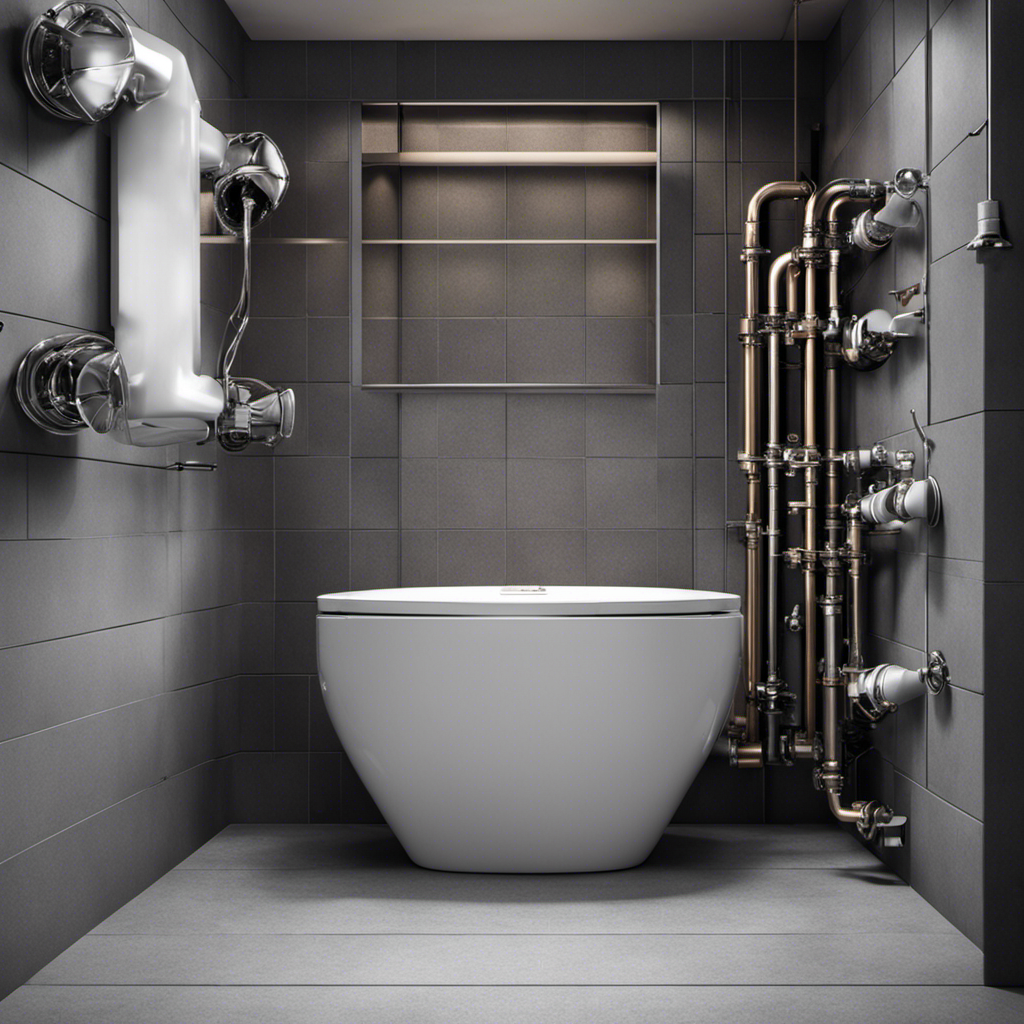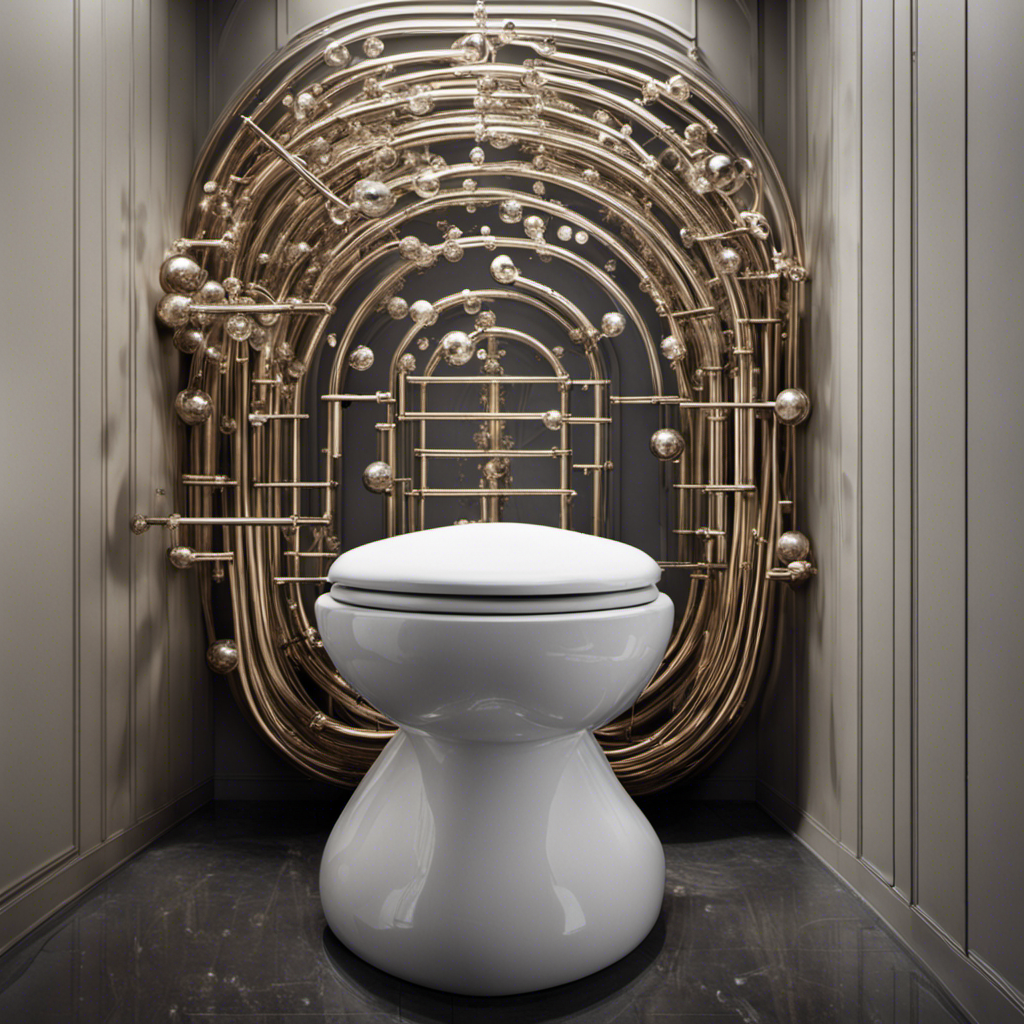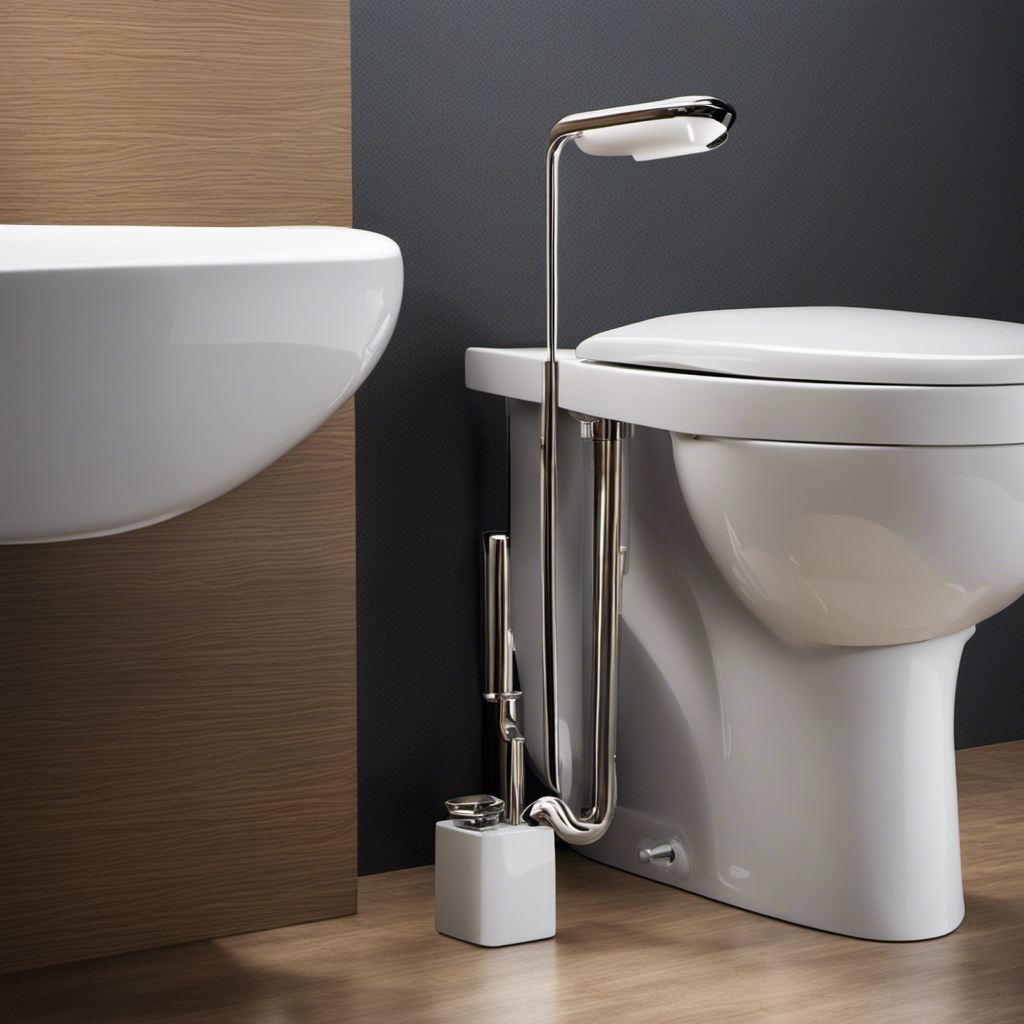Did you know that 80% of households experience a noisy toilet at some point?
If you’re tired of being disturbed by the sound of your toilet constantly making noise, you’ve come to the right place.
In this article, I will guide you through the possible causes of a noisy toilet, help you understand the different noises it can make, and provide troubleshooting tips to fix the issue.
Say goodbye to those annoying toilet noises and enjoy a peaceful bathroom experience once again.
Key Takeaways
- Faulty fill valve can cause constant running or loud noises.
- Different toilet noises can indicate specific issues, such as a clogged drain or a leaking fill valve.
- Troubleshooting common toilet noise issues involves replacing faulty components, clearing clogs, or adjusting water pressure.
- To fix a noisy toilet, turn off the water supply, replace the flapper valve, and check for leaks. Regular maintenance is important to prevent future noise problems.
Possible Causes of Noisy Toilet
One possible cause of a noisy toilet is a faulty fill valve. The fill valve is responsible for regulating the water level in the toilet tank. If it malfunctions, it can cause the toilet to constantly run or make loud noises.
To prevent this issue, regular toilet maintenance is essential. Here are some helpful tips:
-
Firstly, check the fill valve for any signs of damage or wear and tear. If necessary, replace it with a new one.
-
Secondly, make sure the water pressure in your home is not too high, as excessive pressure can cause noisy toilets.
-
Lastly, consider investing in quiet toilet alternatives, such as dual-flush toilets or pressure-assist toilets, which are designed to operate more quietly.
Understanding the Different Toilet Noises
To understand the different toilet noises, it’s important to listen for any unusual sounds. Identifying common toilet noise sources can help pinpoint the issue and guide the necessary repairs.
One common noise source is a running toilet, where water continuously flows into the bowl. This could be caused by a faulty flapper valve or a worn-out fill valve.
Another noise source is a gurgling sound, often indicative of a clogged drain or vent pipe.
A hissing noise can point to a leaking fill valve or a damaged supply line.
Lastly, a banging noise may occur when the water pressure is too high or the pipes are not properly secured.
To maintain a quiet toilet, it is crucial to regularly check and replace any worn-out parts, ensure proper water pressure, and keep the pipes securely fastened.
Troubleshooting Common Toilet Noise Issues
Identifying and resolving common toilet noise issues can be easily done by listening for any unusual sounds and conducting necessary repairs. As an expert in toilet plumbing, I have encountered various types of toilet noises and have developed effective solutions for each. By understanding the underlying causes of these noises, we can quickly pinpoint the problem and implement the appropriate fix. To help you troubleshoot your noisy toilet, I have created a table outlining the most common toilet noise issues and their solutions:
| Noise Issue | Possible Cause | Solution |
|---|---|---|
| Hissing sound | Faulty fill valve | Replace the fill valve |
| Gurgling sound | Partially clogged drain line | Clear the clog in the drain line |
| Whistling sound | Faulty ballcock | Adjust or replace the ballcock |
| Banging sound | Water hammer | Install a water hammer arrestor |
| Constant running | Flapper valve not sealing | Replace the flapper valve |
How to Fix a Noisy Toilet
If your toilet is making a constant running noise, the flapper valve may need to be replaced. This is a common issue that can be easily fixed with a few simple steps.
First, turn off the water supply to the toilet by closing the shut-off valve located behind the toilet.
Next, flush the toilet to drain the tank completely.
Remove the old flapper valve by disconnecting it from the flush chain and unscrewing any retaining nuts.
Install the new flapper valve by following the manufacturer’s instructions.
Finally, turn the water supply back on and test the toilet for any leaks or noises. If the problem persists, there may be other underlying issues that require professional assistance.
Taking care of these toilet repair options and common toilet noise solutions will ensure a quieter and more efficient bathroom experience.
In the next section, we will discuss some preventive measures to avoid future toilet noise problems.
Preventing Future Toilet Noise Problems
One way to prevent future toilet noise problems is by regularly checking and maintaining the flapper valve. The flapper valve is a crucial component of the toilet tank that controls the flow of water into the bowl. Over time, the flapper valve can become worn out or damaged, leading to leaks and noisy operation. By inspecting the flapper valve for signs of wear or damage and replacing it as needed, you can ensure that your toilet operates quietly and efficiently. In addition to maintaining the flapper valve, there are other toilet noise prevention techniques to consider. These include checking for loose or worn out parts, adjusting the water pressure, and ensuring proper alignment of the fill valve and float. By staying vigilant and addressing any signs of potential toilet noise issues, you can enjoy a peaceful bathroom experience.
| Sign of Potential Toilet Noise Issues | Prevention Technique |
|---|---|
| Frequent running or hissing sound | Check and adjust water pressure |
| Whistling or squealing noise | Inspect and tighten loose parts |
| Gurgling or bubbling noise | Ensure proper alignment of fill valve and float |
Frequently Asked Questions
Can a Noisy Toilet Indicate a More Serious Plumbing Problem?
Yes, a noisy toilet can indicate a more serious plumbing problem. Common causes include a faulty fill valve or flapper, loose pipes, or a damaged float. It’s important to address these issues promptly to prevent further damage.
How Can I Determine if the Noise Is Coming From the Toilet or the Pipes?
To determine the source of the noise and troubleshoot toilet noise, start by listening closely. Like a detective, I pinpoint the sound’s origin, checking the toilet components and pipes for any issues.
Is It Normal for a Toilet to Make Noise After It Has Been Flushed?
After flushing, it is normal for a toilet to make noise for a short period. However, if the noise persists or becomes louder, it could indicate a problem. Troubleshooting noisy toilets involves identifying the causes of the noise and addressing them accordingly.
Can a Faulty Toilet Flapper Cause Noise Issues?
Yes, a faulty toilet flapper can cause noise issues. It may not seal properly, causing water to leak and create noise. Troubleshooting noisy toilets often involves checking and replacing the flapper if necessary.
Are There Any Home Remedies or Quick Fixes to Temporarily Silence a Noisy Toilet?
Yes, there are home remedies and quick fixes to temporarily silence a noisy toilet. These can include adjusting the water level, tightening loose parts, or using a toilet silencer.
Conclusion
After investigating the truth of various theories, it is clear that a noisy toilet can be caused by several factors. Understanding the different toilet noises and troubleshooting common issues is crucial in fixing the problem.
By following the necessary steps and implementing the appropriate solutions, one can easily resolve the noise problem and ensure a peaceful bathroom experience.
Remember to take preventive measures to avoid future toilet noise issues. Don’t let a noisy toilet disrupt your tranquility; take action and restore serenity to your bathroom.










